To learn more about the birds in the map above, select a species or scroll down.
- Coastal California gnatcatcher
Polioptila californica californica - California condor (links to distribution model and profile)
Gymnogyps californianus - Least Bell’s vireo
Vireo bellii pusillus - Western snowy plover
Charadrius nivosus nivosus
What is critical habitat?
Critical habitat refers to an area that is believed to be essential to the conservation of a federally endangered or threatened species. The designated area does not necessarily include the species entire range.
Learn more
Coastal California gnatcatcher, Polioptila californica californica
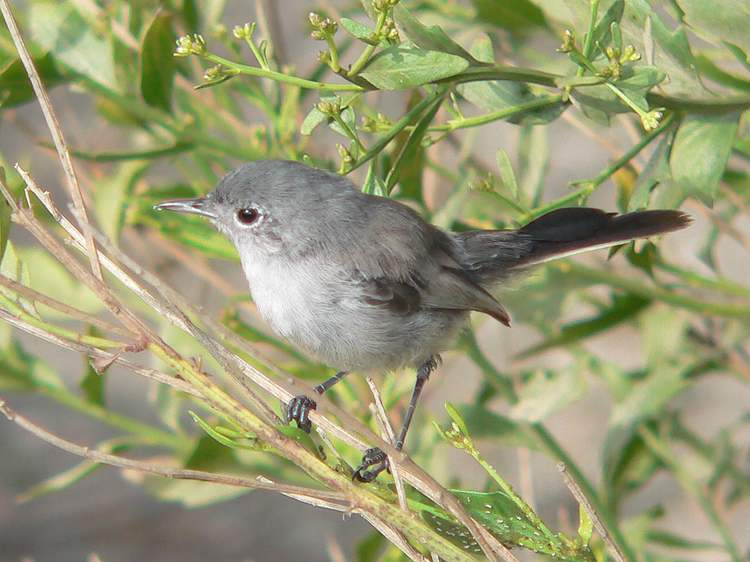
STATUS
Federal status: Threatened
POPULATION TREND
= Stable
RESTORATION
Favorable
FAMILY
Polioptilidae, a close relative of wrens
RANGE
Southern Ventura County, California to El Rosario, Mexico (year round)
Appearance
This small songbird is a dusky gray color and develops a colored crown during the summer (black for males, blue-gray for females). It looks similar to the blue-gray gnatcatcher and black-tailed gnatcatcher, but has a district cat-like call (“zzeeeeeeww, zzeeeeeeww”).
Habitat & Behavior
Coastal California gnatcatcher can be found in coastal scrub vegetation communities near the coast and inland. It requires high quality native shrub habitat to persist. They are insectivores and actively hunt by perching and hovering in shrubs and low trees, but rarely fly to catch prey in mid-air.
Threats
Urban sprawl along the coast of southern California has and continues to threaten coastal California gnatcatcher habitat. It is estimated that coastal sage scrub has been reduced by 70% to 90% in California, and what remains is highly fragmented. Developers and industry groups have tried repeatedly to de-list the coastal California gnatcatcher over the last 20 years.
Conservation
The coastal Gnatcatcher has become a symbol for many conservation groups in southern California. Critical habitat areas have been identified for the coastal California gnatcatcher in Los Angeles, Orange, and San Diego county. Coastal sage scrub habitats on bases like Camp Pendleton have been protected and managed by the military. Large areas of coastal sage scrub have also been restored along the coast and are being restored in the Baldwin Hills.
Where can you spot it?
Along the Seascape Trail, just north of Point Vicente Interpretive Center on the Palos Verdes peninsula
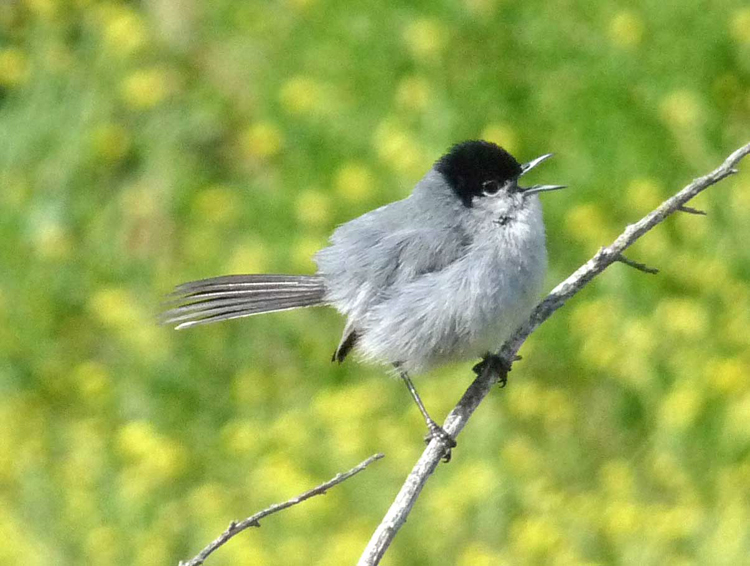
Least Bell’s vireo, Vireo bellii pusillus
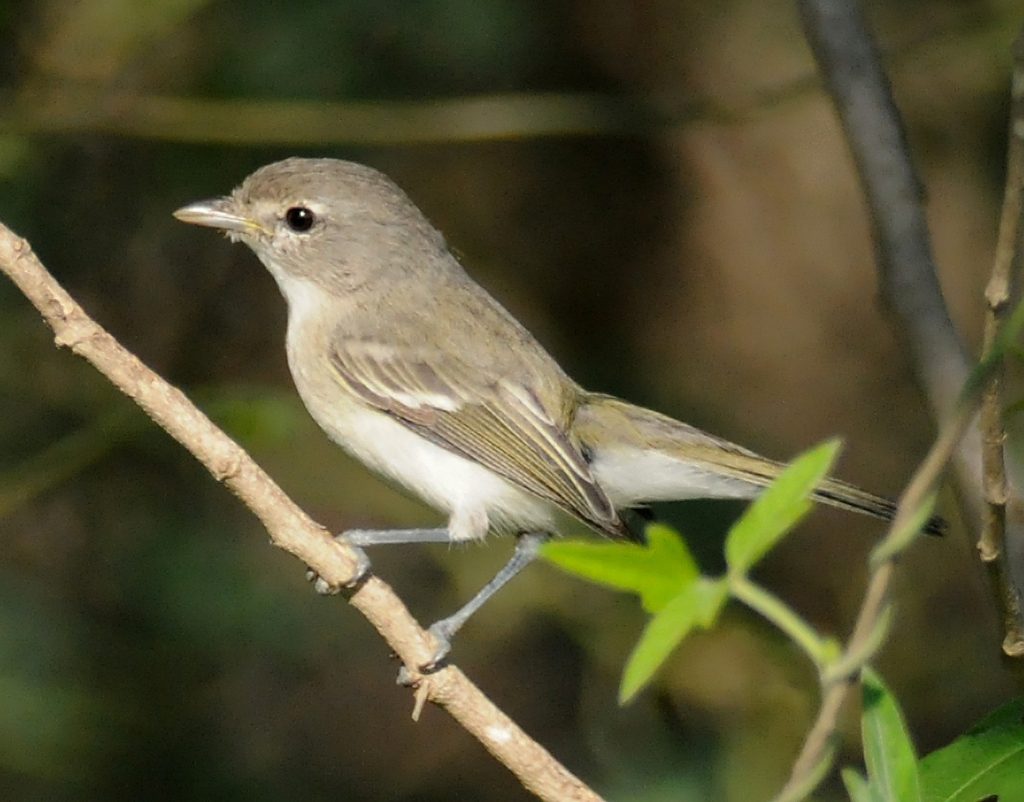
STATUS
Federal status: Endangered
State status: Endangered
POPULATION TREND
(+) Improving
RESTORATION
Intermediate
FAMILY
Vireonidae
RANGE
Summer (March to September): southern California; Winter: Mexico and Central America
Appearance
Least Bell’s vireo is a small, slim gray bird with a stout grayish bill. It is very hard to identify visually, but has a distinct call.
Habitat & Behavior
Least Bell’s vireo occurs in shrubby, willow and cottonwood habitat as well as early successional habitat near streams and riparian areas. They feed on insects, spiders, snails, and fruits. These migratory birds often return to the same nesting territory year after year, where they typically nest in small trees or shrubs about a meter off the ground.
Threats
The primary threat to least Bell’s vireo is extensive alteration of riparian habitats throughout its range. Flood controls, urban development, and agricultural expansion have significantly decreased and fragmented suitable riparian habitat. Invasions of giant reed (Arundo donax) have also affected the vireo’s food sources. Cowbird nest predation is a significant threat as well, with cowbirds laying eggs in least Bell’s vireos nests.
Conservation
The least Bell’s vireo is increasing throughout southern California, with a tenfold increase in the recorded population since its listing in 1986. However, continued and increased protection of areas where they have been observed is still needed.
Where can you spot it?
From March to September, least Bell’s vireo may be seen along the Santa Clara River
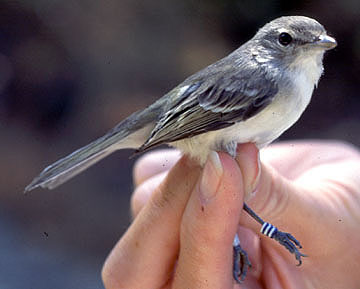
Western snowy plover, Charadrius nivosus nivosus
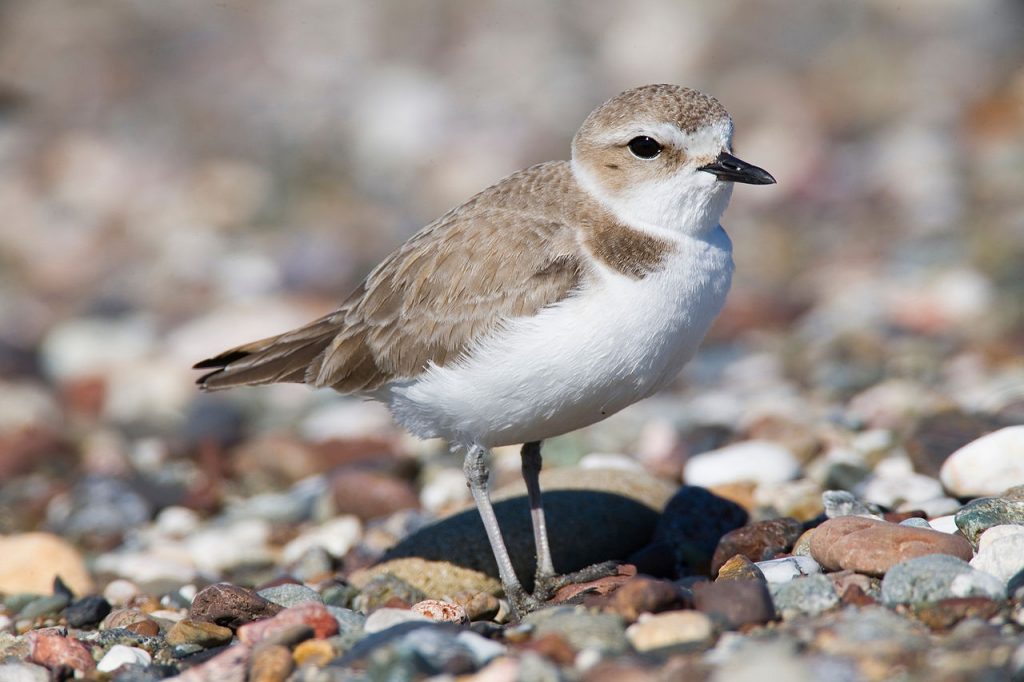
STATUS
Federal status: Threatened
POPULATION TREND
(-) Decreasing
RESTORATION
Favorable
FAMILY
Charadriidae
RANGE
Washington state to Mexico, within 50 miles of the Pacific coast
Appearance
The western snowy plover is a small compact migratory shorebird less than 10 cm tall. They have grayish-tan backs and white bellies, with dark patches on the sides of their neck.
Habitat
Populations of western snowy plover may inhabit sandy, coastal beaches or inland salt ponds. They build their nests on dry ground and line them with pebbles, shells, twigs, or the bones of small fish or mammals. They do not eat these animals themselves, however, but feed on terrestrial and aquatic invertebrates.
Threats
The main threats to western snowy plover are loss of beach habitat, increased predation by feral cats, and human disturbance such as recreation and beach grading.
Conservation
Federal and State officials have identified critical habitat areas for the western snowy plover. The Piute Ponds in the Mojave Desert are currently protected by the Air Force and being managed to promote endangered species habitat. Restoration of beach habitats are especially needed in Los Angeles County. Encouraging local officials and communities to fence off areas would permit the return of native vegetation and species like western snow plover.
Where can you spot it?
Western snowy plovers can be seen at the Malibu lagoon. Beaches near LAX are fenced to protected nesting birds.
Data source:
Critical habitat from US Fish and Wildlife Service, accessed via ECOS (Environmental Conservation Online System)
References: